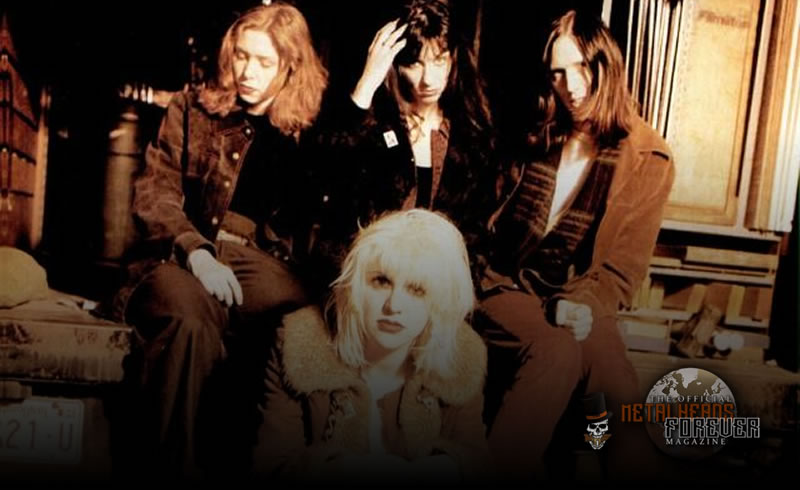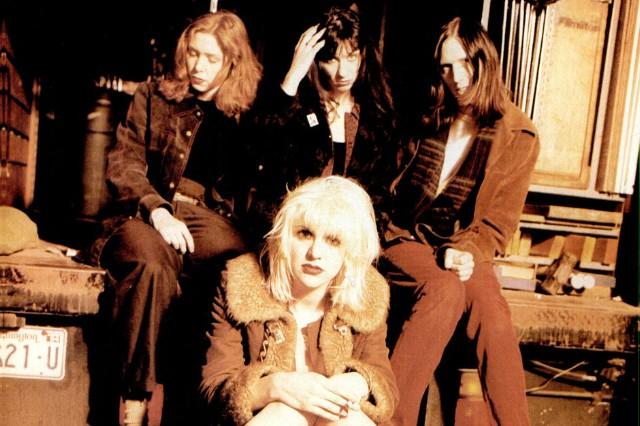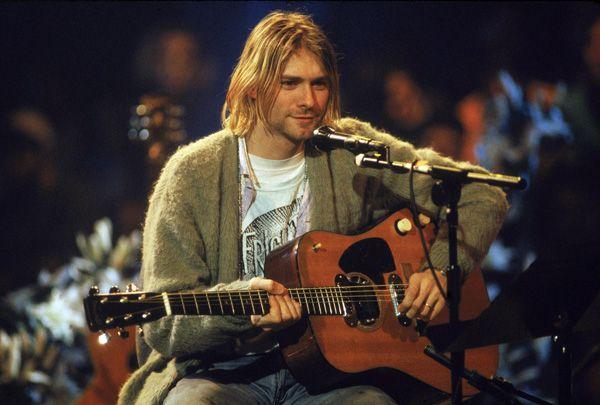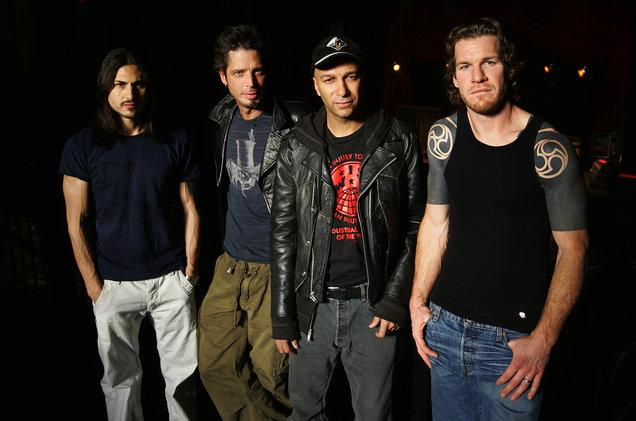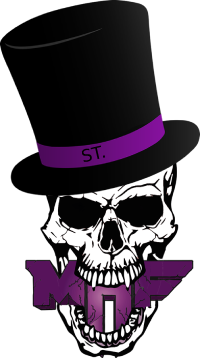“Sounds Like Seattle” by Adam McCann
“Part Two: How grunge fell from grace, through dark, desperate times and found redemption”
By 1994, grunge had stretched beyond its means and quickly began to implode, the bands which had made the movement successful had disbanded or were distancing themselves from the grunge moniker altogether. Grunge had become more than a musical trend, it had exploded into the mainstream so quick that it became a fad and just like punk a decade earlier, it had become the very thing it had fought to vehemently against. Like breaking the speed barrier, grunge was gone as quickly as it arrived, but the sonic boom it left in its wake nearly crippled the genre entirely. Grunge became a dirty word and was only spoken of in hushed tones as the world focused on Britpop, post-grunge and nu-metal, grunge struggled, their icons passed away and bands went on indefinite hiatus. But, as 2009 ticked over to 2010, the alternative bands of the Seattle began to reappear as elder statesmen’s of rock/metal and alongside them were a horde of young bands playing that muddy sound of Seattle.
In Part 1 last month, MHF looked at how in 1991 the city of Seattle became the biggest and most important city in music. Seattle became the epicentre of the grunge movement, spawning bands like; Pearl Jam, Soundgarden, Nirvana and Alice in Chains, each one of these bands had a drive, determination and a no fucks given attitude that when coupled with a sense of integrity, allowed Generation X to attach themselves to and find an identity. The newly named grunge phenomenon had musicians that those lost in society could relate to, these were real, honest, working people that didn’t sing about how many women they’ve banged, they didn’t sing about summoning the devil or mass killing and mutilation. These artists sang about the real darker aspects of life; depression, isolation, loss and addiction, it was this that made them relatable to the average teenager and very quickly, grunge climbed the charts with albums like ‘Nevermind’, ‘Ten’, ‘Superunknown’ and ‘Dirt’ going multi-platinum in an extremely short space of time. However, grunge had become excessive and bloated, the music that was being released by major record labels and carouseled on MTV was now beyond identifiable to the raw bastardised punk that had originally petered from the Pacific NorthWest and by 1994, the musical focus was once more shifting. It was clear, the world was starting to have had enough of grunge.
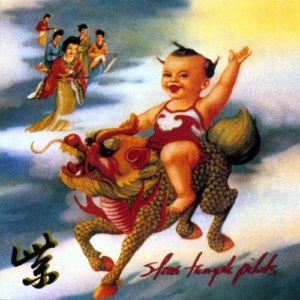 Grunge did not disappear overnight, it did limp on for a few years longer, like a wounded animal looking for somewhere to lay down and die. However, mass disinterest in the movement was accelerated by the untimely death by suicide of Kurt Cobain, the iconic frontman for Nirvana who had become a spokesperson for the disenchanted youth of the early 90’s. Just as the dust was starting to settle following the outpouring of grief for Cobain, Kristen Pfaff, bassist for Hole was also found dead on June 16th, 1994 at 27 due to an overdose by heroin, thus, slamming another nail into the coffin of grunge. But, by this contrast, for grunge, 1994 was not all insufferable loss; earlier in the year Alice in Chains scored a hit with their ‘Jar of Flies’ EP and Soundgarden smashed into the big time like a battering ram with ‘Superunknown’ and the huge single; ‘Black Hole Sun’. In the midst of the music world mourning the death of Kurt Cobain, Stone Temple Pilots released their massive follow up to their debut album in the shape of ‘Purple’. ‘Purple’ improved on the blueprint used with ‘Core’ and expanded on its grunge sound, although tracks like ‘Lounge Fly’ and ‘Unglued’ still had that Pearl Jam vibe to it, ‘Purple’ tried to push away from the connotations that had become attached to them by incorporating different sounds. The major difference was how much stronger Stone Temple Pilots were now as a band, the musicianship in crafting the songs from the DeLeo brothers had improved the band massively; this alongside an improvement of leaps and bounds by Scott Weiland. Weiland showed that he was capable of a hell of a lot more than just another ‘Eddie Vedder soundalike’. It was with ‘Purple’ where Weiland came into his own, not just with his voice, but also with his lyrics, tracks such as ‘Vasoline’ became an alternative anthem for 1994, whilst The Beatles inspired ‘Pretty Penny’ goes to show how much Stone Temple Pilots had grown as a band with its ‘White Album’ style song crafting and vocal delivery. Stone Temple Pilots also took inspiration from blues, country and psychedelia, the latter two spawning huge hits with ‘Interstate Love Song’ and ‘Big Empty’ helping Stone Temple Pilots once more top the charts as ‘Purple’ achieved x6 multi-platinum status in the USA alone.
Grunge did not disappear overnight, it did limp on for a few years longer, like a wounded animal looking for somewhere to lay down and die. However, mass disinterest in the movement was accelerated by the untimely death by suicide of Kurt Cobain, the iconic frontman for Nirvana who had become a spokesperson for the disenchanted youth of the early 90’s. Just as the dust was starting to settle following the outpouring of grief for Cobain, Kristen Pfaff, bassist for Hole was also found dead on June 16th, 1994 at 27 due to an overdose by heroin, thus, slamming another nail into the coffin of grunge. But, by this contrast, for grunge, 1994 was not all insufferable loss; earlier in the year Alice in Chains scored a hit with their ‘Jar of Flies’ EP and Soundgarden smashed into the big time like a battering ram with ‘Superunknown’ and the huge single; ‘Black Hole Sun’. In the midst of the music world mourning the death of Kurt Cobain, Stone Temple Pilots released their massive follow up to their debut album in the shape of ‘Purple’. ‘Purple’ improved on the blueprint used with ‘Core’ and expanded on its grunge sound, although tracks like ‘Lounge Fly’ and ‘Unglued’ still had that Pearl Jam vibe to it, ‘Purple’ tried to push away from the connotations that had become attached to them by incorporating different sounds. The major difference was how much stronger Stone Temple Pilots were now as a band, the musicianship in crafting the songs from the DeLeo brothers had improved the band massively; this alongside an improvement of leaps and bounds by Scott Weiland. Weiland showed that he was capable of a hell of a lot more than just another ‘Eddie Vedder soundalike’. It was with ‘Purple’ where Weiland came into his own, not just with his voice, but also with his lyrics, tracks such as ‘Vasoline’ became an alternative anthem for 1994, whilst The Beatles inspired ‘Pretty Penny’ goes to show how much Stone Temple Pilots had grown as a band with its ‘White Album’ style song crafting and vocal delivery. Stone Temple Pilots also took inspiration from blues, country and psychedelia, the latter two spawning huge hits with ‘Interstate Love Song’ and ‘Big Empty’ helping Stone Temple Pilots once more top the charts as ‘Purple’ achieved x6 multi-platinum status in the USA alone.
Undeterred by the sad, untimely death of Kurt Cobain, his widow, Courtney Love went ahead with the release of their sophomore album; ‘Live Through This’, released just 3 days after the discovery of Cobain’s body. ‘Live Through This’ was furlongs ahead of its predecessor; ‘Pretty on the Inside’, ‘Pretty on the Inside’ was punk, it was raw and the sound of a band cutting its teeth. However, ‘Live Through This’ had direction, the songs were well thought out and crafted throughout, songs such as ‘Violet’ and ‘Doll Parts’ had been floating around since the ‘Pretty on the Inside’ tour, but the writing process of ‘Live Through This’ had honed these songs down into what would become two hit songs for Hole. This increase in focus was obviously aided by Love being married to Cobain and in her own words Love has often stated that she is extremely competitive and wanted to surpass Cobain in songwriting. Therefore, it is no surprise that ‘Live Through This’ takes advantage of the quiet verse, loud chorus which made Nirvana so appealing as well as adding Cobain’s sense of anarchistic melodic playing, most notable in ‘Gutless’, ‘She Walks Over Me’, ‘Violet’ and ‘Miss World’, it was no wonder that ‘Live Through This’ was critically acclaimed and sold exceptionally well, achieving platinum status. Unfortunately, Love would not only have to deal with the suicide of her husband, but two months later, bassist Kristen Ppaff would also pass away causing Hole to bring in Melissa Auf der Mer and on the back of the success of ‘Live Through This’, Hole would continue their rise into the post-grunge world, hitting their pinnacle in 1998 with ‘Celebrity Skin’.
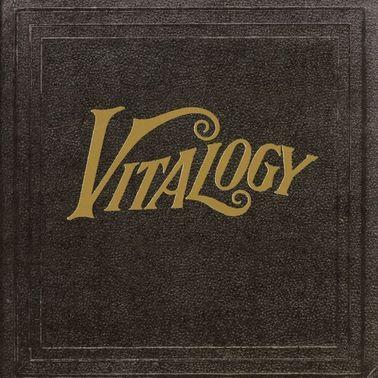 Following the runaway success of ‘Ten’ released back in 1991 and the subsequent explosion of the grunge movement, Pearl Jam had initially embraced this fame, but as their popularity scattered beyond that of Seattle, Pearl Jam found themselves willingly retreating from the spotlight as fast as they could. For their second album; ‘Vs.’ Pearl Jam had purposely chosen to use a production significantly less appealing than that of ‘Ten’, yet ‘Vs.’ still sold exceptionally well. Pearl Jam’s 3rd album, ‘Vitalogy’ was released on the 22nd November 1994 and was mostly written on the ‘Vs.’ tour, however, ‘Vitalogy’ is the point where Pearl Jam majorly depart from the sound which made them famous. ‘Vitalogy’ is written almost entirely in protest to the slaves to the machine that Pearl Jam had become and the fame and lack of privacy that comes with it. By late 1994, it wasn’t just the pressure of fame that was suffocating Pearl Jam, internal pressures were building up to a breaking point. Founding members, bassist Jeff Ament and guitarist Stone Gossard had always been the guiding hand in Pearl Jam, but by the recording sessions for ‘Vitalogy’, vocalist Eddie Vedder was beginning to push for the leader causing an internal conflict which almost destroyed Pearl Jam. This hierarchal power struggle was exacerbated by lead guitarist; Mike McCready’s growing alcohol and drug abuse which led to McCready checking himself into rehab in 1994. As it came to head, Pearl Jam decided that the only way to resolve the issue was if somebody left the band and that person became drummer; Dave Abbruzzese who made way for former Red Hot Chili Pepper’s drummer; Jack Irons to join Pearl Jam. From a music point of view, ‘Vitalogy’ was eclectic at best, it had a sparse production on most of the tracks that made you wonder whether there was any production there at all. Tracks such as ‘Pry, To’, ‘Bugs’, ‘Aye Davanita’ and ‘Stupid Mop’ are born from directionless jams, straightened up a little and recorded. However, ‘Vitalogy’ does contain some fantastic records, it is an isolationist record and shows the depressive state of Pearl Jam at the time, from the straight up punk of ‘Spin the Black Circle’, the angry ‘Not For You’ and ‘Corduroy’ which spat bile at not only record companies, but fans alike, to the beautifully crafted ‘Immortality’, ‘Better Man’ and ‘Nothingman’. These songs ultimately saved Pearl Jam’s strangest album, but for Pearl Jam, the ride wasn’t over yet, if the recording of ‘Vitalogy’ had been strained, then the 1994/95 tour would nearly kill the band dead.
Following the runaway success of ‘Ten’ released back in 1991 and the subsequent explosion of the grunge movement, Pearl Jam had initially embraced this fame, but as their popularity scattered beyond that of Seattle, Pearl Jam found themselves willingly retreating from the spotlight as fast as they could. For their second album; ‘Vs.’ Pearl Jam had purposely chosen to use a production significantly less appealing than that of ‘Ten’, yet ‘Vs.’ still sold exceptionally well. Pearl Jam’s 3rd album, ‘Vitalogy’ was released on the 22nd November 1994 and was mostly written on the ‘Vs.’ tour, however, ‘Vitalogy’ is the point where Pearl Jam majorly depart from the sound which made them famous. ‘Vitalogy’ is written almost entirely in protest to the slaves to the machine that Pearl Jam had become and the fame and lack of privacy that comes with it. By late 1994, it wasn’t just the pressure of fame that was suffocating Pearl Jam, internal pressures were building up to a breaking point. Founding members, bassist Jeff Ament and guitarist Stone Gossard had always been the guiding hand in Pearl Jam, but by the recording sessions for ‘Vitalogy’, vocalist Eddie Vedder was beginning to push for the leader causing an internal conflict which almost destroyed Pearl Jam. This hierarchal power struggle was exacerbated by lead guitarist; Mike McCready’s growing alcohol and drug abuse which led to McCready checking himself into rehab in 1994. As it came to head, Pearl Jam decided that the only way to resolve the issue was if somebody left the band and that person became drummer; Dave Abbruzzese who made way for former Red Hot Chili Pepper’s drummer; Jack Irons to join Pearl Jam. From a music point of view, ‘Vitalogy’ was eclectic at best, it had a sparse production on most of the tracks that made you wonder whether there was any production there at all. Tracks such as ‘Pry, To’, ‘Bugs’, ‘Aye Davanita’ and ‘Stupid Mop’ are born from directionless jams, straightened up a little and recorded. However, ‘Vitalogy’ does contain some fantastic records, it is an isolationist record and shows the depressive state of Pearl Jam at the time, from the straight up punk of ‘Spin the Black Circle’, the angry ‘Not For You’ and ‘Corduroy’ which spat bile at not only record companies, but fans alike, to the beautifully crafted ‘Immortality’, ‘Better Man’ and ‘Nothingman’. These songs ultimately saved Pearl Jam’s strangest album, but for Pearl Jam, the ride wasn’t over yet, if the recording of ‘Vitalogy’ had been strained, then the 1994/95 tour would nearly kill the band dead.
1993 had been a very busy year for Nirvana, the recording and release of ‘In Utero’, a music video for ‘Heart Shaped Box’ and on top of that, the beginnings of successful tour on the back of ‘In Utero’ with Meat Puppets in support. Taking a step away from the screaming feedback and stage demolitions, on the 18th November 1993, Nirvana accepted an invitation to be the latest band to play the growing acoustic ‘MTV Unplugged’ series; an intimate concert at Sony Music Studios in New York City to a limited number of lucky fans. ‘MTV Unplugged in New York’ showed Nirvana at their most open, varied and raw with the band performing very few hits. The exceptions being ‘Come As You Are’ and ‘All Apologies’ alongside fan favourites such as ‘Something in the Way’, ‘Polly’ and ‘On a Plain’ as well as Nirvana throwing in the more obscure tracks like ‘About a Girl’. Nirvana also paid tribute to those artists that had influenced them, in this roster was cult Scottish two piece; The Vaselines, the man who needs no introduction, David Bowie, Cris and Curt Kirkwood of Meat Puppets and early blues pioneer, Lead Belly. As a whole, this selection showed a different and varied side to Nirvana, Nirvana weren’t just a noisy three-piece as bassist Krist Novoselic shows that he is more than capable of playing the accordion playing along to ‘Jesus Doesn’t Want Me For A Sunbeam’, whilst Lori Goldston accompanies most of the songs with the cello adding a completely different dimension to Nirvana’s work. Alongside touring with Nirvana, the Kirkwood brothers had become good friends with Kurt Cobain, with Cobain inviting them to play them to three songs from their alternative classic ‘II’; ‘Plateau’, ‘Oh, Me’ and ‘Lake of Fire’. For this, the Kirkwood brothers would play the lead guitar and bass, whilst Novoselic played the acoustic guitar as Dave Grohl lightly taps his drums along throughout. It was during these Meat Puppets tracks where a guitar-less Cobain looked alone, isolated and vulnerable, bearing his soul as his voice scratched to reach the notes, painting a rather poignant image. Released on November 1st, 1994, ‘Unplugged in New York’ sold exceptionally well , not just for Nirvana, but also Meat Puppets who saw their album of the same year; ‘Too High to Die’ become their best-selling album to date. In the light of what would happen less than 6 months later, ‘Unplugged in New York’ would, in true heroic fashion, become Nirvana’s finest hour, it caught Nirvana at their most raw, flawed and emotional, yet at the same, beautiful, perfect and above all, moving. For the grunge movement, that mop of dirty blond hair, the gaunt, distant and emaciated look wrapped in an old green cardigan would immortalise grunge, it would sound the death knell and as the tolling rang out an era of post-grunge would begin.
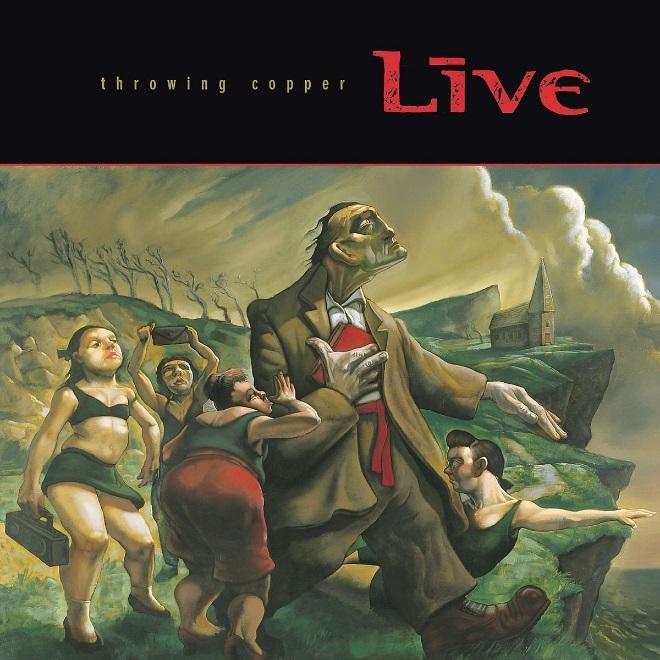 From the very moment that grunge had hit fever pitch in 1992, there was already talk of ‘post-grunge’, what would the music be like in this world? By 1993, the world was starting to understand what this would be about with the emergence of another band from Seattle; Candlebox. Candlebox released their self-titled debut album in 1993, taking the blueprint laid down by Pearl Jam’s massive ‘Ten’ album and added their own updated sound. This sound was the second half of the 90’s calling, it was the sound of a more accessible watered down Pearl Jam and when coupled with a baritone voice, in 1994, this could land you a major record deal. This was the way that the wind was blowing, thrift store flannels and DIY clothes were out, replaced by chain bought ‘grunge’ fashions from big store outlets. Sadly, grunge had become everything it was a movement against, the bands, the fans and fashions had become disposable. Post-grunge was about selling records, it’s albums were very well produced with a pop sheen and each song was meticulously written to appease major record company executives and a generation using MTV to consume the music presented to them. However, at this stage in its life, although splintering off, post-grunge was still relatively attached the grunge limb. This aided bands such as Candlebox, Live and Bush to masquerade behind the curtain of grunge for a little while longer, suckling from the genre, growing silently before being big enough to face the world alone. For Live, this would happen with their second album; ‘Throwing Copper’. Live had spent their pre-‘Throwing Copper’ days as a standard rock band, dabbling with funk overtones for their debut album; ‘Mental Jewellery’ before adopting a more alternative sound for ‘Throwing Copper’. Released on the 26th April, 1994 in the wake of the death of Kurt Cobain, ‘Throwing Copper’ rocketed up the charts, mainly due to the success and heavy rotation on MTV of ‘I Alone’ in which vocalist; Ed Kowalczyk does his best Michael Stipe come Eddie Vedder amalgamation and imitation. ‘Throwing Copper’ was very well received, by both critics and fans alike and would spawn 4 other huge singles eventually going 8x platinum. At the end of 1994, Britain would planet their flag in their grunge movement with the debut album from Bush; ‘Sixteen Stone’. With music fans still mourning the death of Cobain, ‘Sixteen Stone’ offered that little glimmer of hope, a comfort in the reminiscence of the Nirvana sound and was released on December 6th, 1994. Although not as critically well received as ‘Throwing Copper’, music fans lapped up Bush’s Nirvana-esque sound with ‘Sixteen Stone’ sounding somewhere along the lines as to what ‘In Utero’ would have sounded like had it been given the ‘Nevermind’ treatment, ultimately going 6x platinum in the US with hits such as ‘Everything Zen’, ‘Glycerine’ and ‘Comedown’, although at home, the reception was much more lukewarm. If anything, ‘Throwing Copper’ and ‘Sixteen Stone’ gave the indication that although in a different state, grunge had the chance to continue to sell records in a post-grunge environment.
From the very moment that grunge had hit fever pitch in 1992, there was already talk of ‘post-grunge’, what would the music be like in this world? By 1993, the world was starting to understand what this would be about with the emergence of another band from Seattle; Candlebox. Candlebox released their self-titled debut album in 1993, taking the blueprint laid down by Pearl Jam’s massive ‘Ten’ album and added their own updated sound. This sound was the second half of the 90’s calling, it was the sound of a more accessible watered down Pearl Jam and when coupled with a baritone voice, in 1994, this could land you a major record deal. This was the way that the wind was blowing, thrift store flannels and DIY clothes were out, replaced by chain bought ‘grunge’ fashions from big store outlets. Sadly, grunge had become everything it was a movement against, the bands, the fans and fashions had become disposable. Post-grunge was about selling records, it’s albums were very well produced with a pop sheen and each song was meticulously written to appease major record company executives and a generation using MTV to consume the music presented to them. However, at this stage in its life, although splintering off, post-grunge was still relatively attached the grunge limb. This aided bands such as Candlebox, Live and Bush to masquerade behind the curtain of grunge for a little while longer, suckling from the genre, growing silently before being big enough to face the world alone. For Live, this would happen with their second album; ‘Throwing Copper’. Live had spent their pre-‘Throwing Copper’ days as a standard rock band, dabbling with funk overtones for their debut album; ‘Mental Jewellery’ before adopting a more alternative sound for ‘Throwing Copper’. Released on the 26th April, 1994 in the wake of the death of Kurt Cobain, ‘Throwing Copper’ rocketed up the charts, mainly due to the success and heavy rotation on MTV of ‘I Alone’ in which vocalist; Ed Kowalczyk does his best Michael Stipe come Eddie Vedder amalgamation and imitation. ‘Throwing Copper’ was very well received, by both critics and fans alike and would spawn 4 other huge singles eventually going 8x platinum. At the end of 1994, Britain would planet their flag in their grunge movement with the debut album from Bush; ‘Sixteen Stone’. With music fans still mourning the death of Cobain, ‘Sixteen Stone’ offered that little glimmer of hope, a comfort in the reminiscence of the Nirvana sound and was released on December 6th, 1994. Although not as critically well received as ‘Throwing Copper’, music fans lapped up Bush’s Nirvana-esque sound with ‘Sixteen Stone’ sounding somewhere along the lines as to what ‘In Utero’ would have sounded like had it been given the ‘Nevermind’ treatment, ultimately going 6x platinum in the US with hits such as ‘Everything Zen’, ‘Glycerine’ and ‘Comedown’, although at home, the reception was much more lukewarm. If anything, ‘Throwing Copper’ and ‘Sixteen Stone’ gave the indication that although in a different state, grunge had the chance to continue to sell records in a post-grunge environment.
One of the defining factors in the scale of the impact of grunge was its relatively unchallenged run, peaking to a generation of MTV listeners at the decline of thrash and glam metal, whilst simultaneously coexisting alongside the likes of Pantera, Guns N’ Roses, Faith No More, Metallica and Rage Against the Machine. However, post-grunge would have to compete for dominance against the arrival of Britpop with bands such as; Oasis, Blur and Radiohead, the continued rise of the pop/punk sound with Green Day’s huge 1994 album; ‘Dookie’ and the tapping of a cymbal joined by a raw scream of: “Are you ready?!” from a little band called Korn, which kicked the door open and ushered in a tide of nu-metal, all of which would combine to make life increasingly more and more difficult for the remaining grunge bands.
Pearl Jam had already been hell bent on dismantling everything that they had strived to achieve, but it wasn’t just their fame that Pearl Jam were fixated on. By rejecting the spoils of war that come with fame, Pearl Jam had become the anti-heroes, the reluctant messiahs of the grunge movement, the record companies may have hated their stance, but it was the fans that adored this. Pearl Jam didn’t just talk about it, they took the fight to the man and it was during the ‘Vs.’ tour that Pearl Jam turned their attention towards the global ticket company; Ticketmaster. After discovering that not only was Ticketmaster charging an extortionate amount of money for tickets, they had the audacity to place a service charge on top of an already expensive ticket. This outraged an already vexed Pearl Jam who played a very bold move by boycotting Ticketmaster venues in protest. This boycott seriously affected the tour for ‘Vitalogy’ as Pearl Jam took to playing non-Ticketmaster affiliated arenas, keeping to their pledge and keeping tickets at an affordable price. However, these venues were so far in rural areas that it became a struggle for fans to attend or were seriously antiquated when it came to facilities that these venues quickly became mud baths during rain. This caused Pearl Jam to cancel the remainder of their ‘Vitalogy’ tour and sadly, due to the boycott, would not tour in North America for the next few years. Due to this, not only were Pearl Jam feeling that they couldn’t give the fans what they wanted, they were also fighting the ongoing court case with Ticketmaster which ultimately went all the way to Congress. As the battle with Ticketmaster raged on, Pearl Jam had expected other bands to rally around their cause, the bands against authority for the common good, but unfortunately, this wasn’t the case and Pearl Jam found themselves alone against the big companies and this would force Pearl Jam into the wilderness for next decade. However, Pearl Jam can claim a moral victory, as they now had license to do and release whatever they wanted to with Pearl Jam albums henceforth containing beautiful soulful ballads to straight up punk ranging from the sublime to the ridiculous.
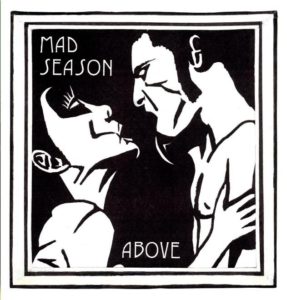 Mike McCready had been struggling with alcohol and substance abuse and with tensions boiling in Pearl Jam, McCready decided to check himself into rehab during 1994. It was here that McCready met blues bassist; John Baker Saunders with the pair leaving rehab clean and sober, they headed home and decided to jam together. Recruiting Screaming Trees drummers; Barrett Martin on the drums, they began to search for a vocalist. Before too long, McCready invited his friend Layne Staley of Alice in Chains to sing in Mad Season; the band that would be regarded as a grunge supergroup. McCready had an ulterior motive to bringing in Staley, McCready had hoped that by being around sober musicians in Mad Season it would encourage Staley to stem his heroin habit that was on the verge of spiralling out of control. Mad Season released their only album; ‘Above’ on March 14th 1995 with McCready providing a guitar sound similar to that of Pearl Jam’s ‘Ten’, most of which can be seen with the guitar solo at the end of ‘X-Ray Mind’ and the hit single; ‘River of Deceit’ which features some of McCready’s best acoustic work this side of ‘Yellow Ledbetter’. However, ‘Above’ wasn’t all acoustic ramblings of redemption, it also had bite to it and McCready cranks out his best Alice in Chains style riff on the album’s second single; ‘I Don’t Know Anything’ as Staley changes from a beautiful soulful voice to his raw screaming voice. After a few shows to support ‘Above’, as with any band with outside commitments, it was time for Mad Season to go on hiatus. However, this hiatus would only last until 1997 when Mad Season attempted to reform, but by this time, Staley was now in the depths of drug addiction and was unable to participate. Staley’s shoes were filled by Screaming Trees frontman; Mark Lanegan and from here, Mad Season changed their name to Disinformation. Unfortunately, nothing would come of this, conflicting schedules made it increasingly more and more difficult to get together and Disinformation would go hiatus once more. By 1999, the black dog that had been stalking the grunge movement for years was about to take its next victim. On January 15th 1999, Mad Season/Disinformation bassist; John Baker Saunders was found dead in his home after an overdose due to a relapse in heroin, he was 44. Saunders’ death deeply affected the remaining members and Mad Season was placed on indefinite hiatus.
Mike McCready had been struggling with alcohol and substance abuse and with tensions boiling in Pearl Jam, McCready decided to check himself into rehab during 1994. It was here that McCready met blues bassist; John Baker Saunders with the pair leaving rehab clean and sober, they headed home and decided to jam together. Recruiting Screaming Trees drummers; Barrett Martin on the drums, they began to search for a vocalist. Before too long, McCready invited his friend Layne Staley of Alice in Chains to sing in Mad Season; the band that would be regarded as a grunge supergroup. McCready had an ulterior motive to bringing in Staley, McCready had hoped that by being around sober musicians in Mad Season it would encourage Staley to stem his heroin habit that was on the verge of spiralling out of control. Mad Season released their only album; ‘Above’ on March 14th 1995 with McCready providing a guitar sound similar to that of Pearl Jam’s ‘Ten’, most of which can be seen with the guitar solo at the end of ‘X-Ray Mind’ and the hit single; ‘River of Deceit’ which features some of McCready’s best acoustic work this side of ‘Yellow Ledbetter’. However, ‘Above’ wasn’t all acoustic ramblings of redemption, it also had bite to it and McCready cranks out his best Alice in Chains style riff on the album’s second single; ‘I Don’t Know Anything’ as Staley changes from a beautiful soulful voice to his raw screaming voice. After a few shows to support ‘Above’, as with any band with outside commitments, it was time for Mad Season to go on hiatus. However, this hiatus would only last until 1997 when Mad Season attempted to reform, but by this time, Staley was now in the depths of drug addiction and was unable to participate. Staley’s shoes were filled by Screaming Trees frontman; Mark Lanegan and from here, Mad Season changed their name to Disinformation. Unfortunately, nothing would come of this, conflicting schedules made it increasingly more and more difficult to get together and Disinformation would go hiatus once more. By 1999, the black dog that had been stalking the grunge movement for years was about to take its next victim. On January 15th 1999, Mad Season/Disinformation bassist; John Baker Saunders was found dead in his home after an overdose due to a relapse in heroin, he was 44. Saunders’ death deeply affected the remaining members and Mad Season was placed on indefinite hiatus.
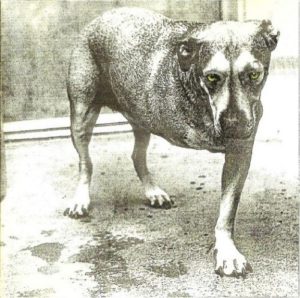 After the release of ‘Jar of Flies’ in 1994, Alice in Chains were destined to head out on the road with Metallica, this tour would also feature; Suicidal Tendencies, Danzig and Fight, however, it was never to be as Layne Staley checked himself into rehab due to problems with heroin and a decision to put Alice in Chains on hold was made. It was during this time that Staley joined Mad Season and the remaining members of Alice in Chains began to work on what would be assumed a solo album from Jerry Cantrell. However, Staley returned to Alice in Chains and began to write lyrics for what would become Alice in Chains’ 3rd album. ‘Alice in Chains’ was released on the 7th November and took a considerably heavier and darker turn than their previous albums. ‘Alice in Chains’ was sludgey and grinding, but also featured Cantrell singing lead vocals on 2 of the 3 singles from the album, the brooding ‘Grind’ and the beautiful ballad; ‘Heaven Beside You’ with Staley providing the harmonies. However, Staley did sing on the final single from ‘Alice in Chains’; ‘Again’ as well as writing most of the albums lyrics. Alice in Chains managed to stay mainly within the confines which had made them famous, however the more acoustic EP’s of ‘Jar of Flies’ and ‘Sap’ had added much more of an emphasis in song structure and melody and this can be seen during ‘Heaven Beside You’ and ‘Shame In You’, but can also be seen in the heavier songs such as ‘Sludge Factory’, ‘Head Creeps’ and the crushing ‘God Am’. By now, Staley was once more heavily using heroin and this severely affected Alice in Chains’ ability to tour for the album with Alice in Chains once more entering an on/off hiatus over the next few years. The inability to tour did not affect the sales for ‘Alice in Chains’ and it reached number 1 on the US Billboard 200 as well as top 10 placements for ‘Grind’, ‘Heaven Beside You’ and ‘Again’ with ‘Alice in Chains’ eventually going 2x platinum.
After the release of ‘Jar of Flies’ in 1994, Alice in Chains were destined to head out on the road with Metallica, this tour would also feature; Suicidal Tendencies, Danzig and Fight, however, it was never to be as Layne Staley checked himself into rehab due to problems with heroin and a decision to put Alice in Chains on hold was made. It was during this time that Staley joined Mad Season and the remaining members of Alice in Chains began to work on what would be assumed a solo album from Jerry Cantrell. However, Staley returned to Alice in Chains and began to write lyrics for what would become Alice in Chains’ 3rd album. ‘Alice in Chains’ was released on the 7th November and took a considerably heavier and darker turn than their previous albums. ‘Alice in Chains’ was sludgey and grinding, but also featured Cantrell singing lead vocals on 2 of the 3 singles from the album, the brooding ‘Grind’ and the beautiful ballad; ‘Heaven Beside You’ with Staley providing the harmonies. However, Staley did sing on the final single from ‘Alice in Chains’; ‘Again’ as well as writing most of the albums lyrics. Alice in Chains managed to stay mainly within the confines which had made them famous, however the more acoustic EP’s of ‘Jar of Flies’ and ‘Sap’ had added much more of an emphasis in song structure and melody and this can be seen during ‘Heaven Beside You’ and ‘Shame In You’, but can also be seen in the heavier songs such as ‘Sludge Factory’, ‘Head Creeps’ and the crushing ‘God Am’. By now, Staley was once more heavily using heroin and this severely affected Alice in Chains’ ability to tour for the album with Alice in Chains once more entering an on/off hiatus over the next few years. The inability to tour did not affect the sales for ‘Alice in Chains’ and it reached number 1 on the US Billboard 200 as well as top 10 placements for ‘Grind’, ‘Heaven Beside You’ and ‘Again’ with ‘Alice in Chains’ eventually going 2x platinum.
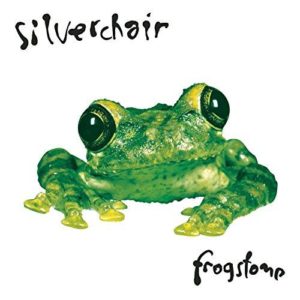 By 1995, Cobain’s suicide had finished Nirvana, Pearl Jam had dismantled their own fame, Soundgarden were internally fighting whilst Alice in Chains and Stone Temple Pilots were descending into their own drug hell, the corporate machine was now free to sign and label whatever they wanted as grunge. Following the success of ‘Sixteen Stone’ by Bush the year previously, it gave non-American artists a hope of making it big and on March 27th, Australia added themselves to the grunge world with ‘Frogstomp’; the debut album from Silverchair. Silverchair were only 15 at the time of the release of ‘Frogstomp’ and Silverchair became to grunge what Warrant were to glam metal a few years earlier. The music that Silverchair would play on ‘Frogstomp’ would not purvey a unique sound, but would instead amalgamate various different grunge bands together into a winning formula. For example, the opening track on ‘Frogstomp’; ‘Israel’s Son’ would begin with a bassline that sounds like the bastard offspring of ‘Come Together’ by The Beatles and ‘Even Flow’ by Pearl Jam, as vocalist and guitarist; Daniel Johns would appear with a mop of blond hair and smooth baritone voice that gave the illusion of Scott Weiland trapped inside Kurt Cobain’s body. Silverchair would quickly become an in-joke, a bit of a laughing stock as they were blasted by critics and fans alike for being Nirvana/Pearl Jam-lite. However, this bunch of 15 year olds would know how to write a song with huge hit singles for ‘Israel’s Son’, ‘Tomorrow’ and ‘Pure Massacre’ hitting all the right buttons and for a band receiving so much flak, people were buying their records and ‘Frogstomp’ would break the US ‘Billboard’ 200 in the top 10, peaking at number 9.
By 1995, Cobain’s suicide had finished Nirvana, Pearl Jam had dismantled their own fame, Soundgarden were internally fighting whilst Alice in Chains and Stone Temple Pilots were descending into their own drug hell, the corporate machine was now free to sign and label whatever they wanted as grunge. Following the success of ‘Sixteen Stone’ by Bush the year previously, it gave non-American artists a hope of making it big and on March 27th, Australia added themselves to the grunge world with ‘Frogstomp’; the debut album from Silverchair. Silverchair were only 15 at the time of the release of ‘Frogstomp’ and Silverchair became to grunge what Warrant were to glam metal a few years earlier. The music that Silverchair would play on ‘Frogstomp’ would not purvey a unique sound, but would instead amalgamate various different grunge bands together into a winning formula. For example, the opening track on ‘Frogstomp’; ‘Israel’s Son’ would begin with a bassline that sounds like the bastard offspring of ‘Come Together’ by The Beatles and ‘Even Flow’ by Pearl Jam, as vocalist and guitarist; Daniel Johns would appear with a mop of blond hair and smooth baritone voice that gave the illusion of Scott Weiland trapped inside Kurt Cobain’s body. Silverchair would quickly become an in-joke, a bit of a laughing stock as they were blasted by critics and fans alike for being Nirvana/Pearl Jam-lite. However, this bunch of 15 year olds would know how to write a song with huge hit singles for ‘Israel’s Son’, ‘Tomorrow’ and ‘Pure Massacre’ hitting all the right buttons and for a band receiving so much flak, people were buying their records and ‘Frogstomp’ would break the US ‘Billboard’ 200 in the top 10, peaking at number 9.
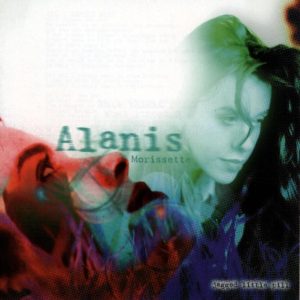 If any album can hit the pinnacle of the corporate machine capitalising upon the grunge phenomenon, it is that of ‘Jagged Little Pill’ by angsty Canadian firebox; Alanis Morrisette. For Morrisette, ‘Jagged Little Pill’ would be her 3rd outing as an artist, however, it also marked a dramatic move away from the teenage dance pop that Morrisette had been playing back home in Canada. ‘Jagged Little Pill’ showed an isolated and vulnerable Morrisette, but during the album, she would channel these energies into strength, rejuvenation and anger and these lyrics arranged into an alternative rock style coupled with a pop production and cameo roles from Flea and then Red Hot Chili Peppers guitarist; Dave Navarro, ‘Jagged Little Pill’ was destined to become a big seller, although nobody would expect just how well. ‘Jagged Little Pill’ was laden with the huge singles; ‘You Oughta Know’, ‘Hand in my Pocket’, ‘Ironic’, ‘You Learn’, ‘Head Over Feet’ and ‘All I Really Want’ were all coupled with grunge-esque music videos showing Alanis Morrisette in oversized cardigans with long limp dark hair through warm hues and fish eye lens’ that helped ‘Jagged Little Pill’ not only become one of the best selling albums of 1995, but also the decade. The pop overtones that dominated ‘Jagged Little Pill’ showed how far grunge had come since 1990 as those who controlled the media placed a happy plaid flannel curtain over the corpse of grunge as they continued to peddle what they deemed grunge to the masses. Once more, the stalking black dog was back and on the prowl again as the bell began to toll for another unique voice of the decade.
If any album can hit the pinnacle of the corporate machine capitalising upon the grunge phenomenon, it is that of ‘Jagged Little Pill’ by angsty Canadian firebox; Alanis Morrisette. For Morrisette, ‘Jagged Little Pill’ would be her 3rd outing as an artist, however, it also marked a dramatic move away from the teenage dance pop that Morrisette had been playing back home in Canada. ‘Jagged Little Pill’ showed an isolated and vulnerable Morrisette, but during the album, she would channel these energies into strength, rejuvenation and anger and these lyrics arranged into an alternative rock style coupled with a pop production and cameo roles from Flea and then Red Hot Chili Peppers guitarist; Dave Navarro, ‘Jagged Little Pill’ was destined to become a big seller, although nobody would expect just how well. ‘Jagged Little Pill’ was laden with the huge singles; ‘You Oughta Know’, ‘Hand in my Pocket’, ‘Ironic’, ‘You Learn’, ‘Head Over Feet’ and ‘All I Really Want’ were all coupled with grunge-esque music videos showing Alanis Morrisette in oversized cardigans with long limp dark hair through warm hues and fish eye lens’ that helped ‘Jagged Little Pill’ not only become one of the best selling albums of 1995, but also the decade. The pop overtones that dominated ‘Jagged Little Pill’ showed how far grunge had come since 1990 as those who controlled the media placed a happy plaid flannel curtain over the corpse of grunge as they continued to peddle what they deemed grunge to the masses. Once more, the stalking black dog was back and on the prowl again as the bell began to toll for another unique voice of the decade.
Building on the success of their 4x platinum self-titled debut album, Blind Melon released their second album; ‘Soup’ on August 15th 1995. Although never strictly a grunge band, grunge certainly facilitated Blind Melon’s success with their blend of alternative rock, psychedelia and folk influences led by the talismanic Shannon Hoon.  Hoon mesmerised audiences with his rather unique voice and lyrical delivery, all arriving wrapped like an enigma in metaphor, tracks such as ‘Galaxie’ were written about Hoon’s car and presented in Blind Melon’s laid back style. It had become apparent during the tour to support ‘Blind Melon’ that Hoon had developed an unhealthy relationship with drugs and when you compare Blind Melon’s first album to ‘Soup’, it takes a distinctly darker undercurrent, from the experiences of rehab and detox through ‘2×4’, to suicidal musings with ‘St. Andrew’s Fall’, the medical condition of halitosis on ‘Wilt’ and ‘Skinned’; a song about Ed Gein, the serial killer who famously flayed his victims and fashioned their skin into household objects, clothing and masks with Hoon easily managing to place this rather grim subject material into a bouncing pop song that envies that of The Beatles in their psychedelic prime. ‘Soup’ received generally favourable reviews upon release, but the hard work that Blind Melon had been building up over the course of their debut and ‘Soup’ was about to come to a crashing halt when Hoon was found dead on their tour bus due to a cardiac arrest brought on by a cocaine overdose. Shannon Hoon was 28. Hoon’s death brought another blow to the grunge movement, yet it would continue to limp forward.
Hoon mesmerised audiences with his rather unique voice and lyrical delivery, all arriving wrapped like an enigma in metaphor, tracks such as ‘Galaxie’ were written about Hoon’s car and presented in Blind Melon’s laid back style. It had become apparent during the tour to support ‘Blind Melon’ that Hoon had developed an unhealthy relationship with drugs and when you compare Blind Melon’s first album to ‘Soup’, it takes a distinctly darker undercurrent, from the experiences of rehab and detox through ‘2×4’, to suicidal musings with ‘St. Andrew’s Fall’, the medical condition of halitosis on ‘Wilt’ and ‘Skinned’; a song about Ed Gein, the serial killer who famously flayed his victims and fashioned their skin into household objects, clothing and masks with Hoon easily managing to place this rather grim subject material into a bouncing pop song that envies that of The Beatles in their psychedelic prime. ‘Soup’ received generally favourable reviews upon release, but the hard work that Blind Melon had been building up over the course of their debut and ‘Soup’ was about to come to a crashing halt when Hoon was found dead on their tour bus due to a cardiac arrest brought on by a cocaine overdose. Shannon Hoon was 28. Hoon’s death brought another blow to the grunge movement, yet it would continue to limp forward.
The death of Kurt Cobain in 1994 deeply affected Dave Grohl with the ex-Nirvana drummer finding himself unable to sit behind a drum kit without being reminded of Nirvana and therefore Cobain. 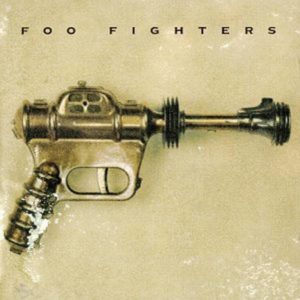 During Grohl’s depression following Cobain’s suicide, Grohl began writing and recording some demo songs under the codename; Foo Fighters. These demo recordings quickly gathered the interest of Capitol Records and ‘Foo Fighters’ was released on the 4th of July 1995. Although Grohl recorded and played all the instruments on ‘Foo Fighters’, he assembled a band that included the guitarist for Nirvana on the ‘In Utero’ tour; Pat Smear and began a tour in support of ‘Foo Fighters’ on the back of the singles; ‘This is a Call’, ‘I’ll Stick Around’ and ‘Big Me’. ‘Foo Fighters’ had taken a huge influence from Nirvana with ‘Foo Fighters’ taking advantage of the quiet verse, loud chorus that made the huge songs of grunge so popular and adding Grohl’s Beatle-esque vocal melodies alongside this began to make Foo Fighters a household name. From here, Foo Fighters would go on to dominate the pop/rock landscape and even now, 22 years after their formation, it is debatable whether or not there is a bigger band on the planet right now. Grohl is often seen as one of the most likable people in music and Foo Fighters’ legacy can match that of even Nirvana. Although Foo Fighters have come a long way since the more grungy tones of their eponymous debut album, the band itself can act as one of the biggest gateways, not only into rock music itself, but also towards the more stereotypical grunge bands and beyond.
During Grohl’s depression following Cobain’s suicide, Grohl began writing and recording some demo songs under the codename; Foo Fighters. These demo recordings quickly gathered the interest of Capitol Records and ‘Foo Fighters’ was released on the 4th of July 1995. Although Grohl recorded and played all the instruments on ‘Foo Fighters’, he assembled a band that included the guitarist for Nirvana on the ‘In Utero’ tour; Pat Smear and began a tour in support of ‘Foo Fighters’ on the back of the singles; ‘This is a Call’, ‘I’ll Stick Around’ and ‘Big Me’. ‘Foo Fighters’ had taken a huge influence from Nirvana with ‘Foo Fighters’ taking advantage of the quiet verse, loud chorus that made the huge songs of grunge so popular and adding Grohl’s Beatle-esque vocal melodies alongside this began to make Foo Fighters a household name. From here, Foo Fighters would go on to dominate the pop/rock landscape and even now, 22 years after their formation, it is debatable whether or not there is a bigger band on the planet right now. Grohl is often seen as one of the most likable people in music and Foo Fighters’ legacy can match that of even Nirvana. Although Foo Fighters have come a long way since the more grungy tones of their eponymous debut album, the band itself can act as one of the biggest gateways, not only into rock music itself, but also towards the more stereotypical grunge bands and beyond.
Towards the end of 1995, Smashing Pumpkins would release their magnum opus; ‘Mellon Collie and the Infinite Sadness’. This album saw Smashing Pumpkins break away from the grunge movement that had facilitated their success in the early part of 90’s and begin experimenting with hugely different sounds, in particular, odd time signatures and an emphasis on drum machines and highly orchestrated parts. 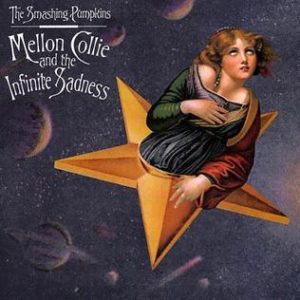 This was seen with the hit song; ‘Tonight, Tonight’ in which Smashing Pumpkins blended a Victorian sideshow, almost Steampunk music video against their evolving sound. However, Smashing Pumpkins did retain some of that gloomy, heavy drone which made them famous and incorporated their ever expanding sound into this, from the hum of ‘Jellybelly’, ‘Here is No Why’ and ‘Love’, to the more aggressive attack of ‘Zero’ and the lead-off single from ‘Mellon Collie and the Infinite Sadness’; ‘Bullet with Butterfly Wings’. ‘Bullet with Butterfly Wings’ was the music world’s first glimpse of a new look Billy Corgan in which the music video was filmed with a slight negative filter and against Corgan’s now dyed black short hair, eyeliner and black t-shirt, started to show the Gothic direction that Smashing Pumpkins would begin to probe. As the 90’s began to change the musical landscape forever and Generation X began to fade away, Smashing Pumpkins would begin to forge their own future away from the grunge era that had allowed them to reach their pinnacle and as the curtain closed on 1995, the grunge movement would have one last hurrah before retreating as quickly as it arrived.
This was seen with the hit song; ‘Tonight, Tonight’ in which Smashing Pumpkins blended a Victorian sideshow, almost Steampunk music video against their evolving sound. However, Smashing Pumpkins did retain some of that gloomy, heavy drone which made them famous and incorporated their ever expanding sound into this, from the hum of ‘Jellybelly’, ‘Here is No Why’ and ‘Love’, to the more aggressive attack of ‘Zero’ and the lead-off single from ‘Mellon Collie and the Infinite Sadness’; ‘Bullet with Butterfly Wings’. ‘Bullet with Butterfly Wings’ was the music world’s first glimpse of a new look Billy Corgan in which the music video was filmed with a slight negative filter and against Corgan’s now dyed black short hair, eyeliner and black t-shirt, started to show the Gothic direction that Smashing Pumpkins would begin to probe. As the 90’s began to change the musical landscape forever and Generation X began to fade away, Smashing Pumpkins would begin to forge their own future away from the grunge era that had allowed them to reach their pinnacle and as the curtain closed on 1995, the grunge movement would have one last hurrah before retreating as quickly as it arrived.
Although the death of Kurt Cobain in 1994 had slammed a huge nail into the coffin of grunge signalling the beginning of the demise of the genre, 1996 became grunge’s last stand. On the 21st May 1996, Soundgarden would release their last album of the 90’s; ‘Down on the Upside’. Soundgarden had toured heavily for ‘Superunknown’ and capitalising upon the success of this album, they entered the studio to begin work on what would become ‘Down on the Upside’. Although the band retained their characteristic use of odd time signatures, most prevalent on ‘Dusty’, ‘Ty Cobb’ and Kim Thayil penned ‘Never the Machine Forever’, ‘Down on the Upside’ was considerably less heavy than its predecessors, with Chris Cornell pushing away from heavy guitars and instead choosing to focus more upon melody and song structure. 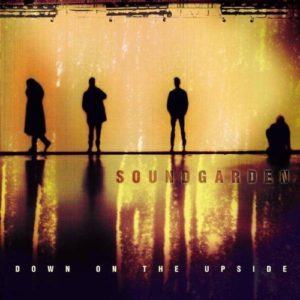 This can be seen in the successful singles that ‘Down on the Upside’ spawned; ‘Burden in My Hand’, ‘Blow Up the Outside World’ and the major chord progression of ‘Pretty Noose’. By 1997, the internal pressures within Soundgarden that had been building from pre-‘Superunknown’ days came to head. Soundgarden were now dog-tired, they began to look disinterested on stage and with Cornell’s voice ailing from constant touring, the band decided to call it a day on the 9th April 1997, exactly 2 months after finishing their tour for ‘Down on the Upside’.
This can be seen in the successful singles that ‘Down on the Upside’ spawned; ‘Burden in My Hand’, ‘Blow Up the Outside World’ and the major chord progression of ‘Pretty Noose’. By 1997, the internal pressures within Soundgarden that had been building from pre-‘Superunknown’ days came to head. Soundgarden were now dog-tired, they began to look disinterested on stage and with Cornell’s voice ailing from constant touring, the band decided to call it a day on the 9th April 1997, exactly 2 months after finishing their tour for ‘Down on the Upside’.
Barrett Martin, the drummer for Screaming Trees had spent 1995 working with Mad Season, whilst vocalist Mark Lanegan had been working on his second solo album: ‘Whiskey for the Holy Ghost’ which was released in 1994. All these outside distractions pushed Screaming Trees on the backburner, but by 1996, Screaming Trees were back with what would be their final album; ‘Dust’, released 4 years after their last album, the successful ‘Sweet Oblivion’. It would play out that although the musical landscape that ‘Dust’ was released into was considerably different now to that of 1992, ‘Dust’ would still prove to be a success on the back of the singles; ‘All I Know’ and ‘Dying Days’, the former of which would become the first Screaming Trees single to chart overseas, reaching number 9 in the UK charts. Unfortunately for Screaming Trees, upon finishing the tour for ‘Dust’, Lanegan decided to record his 3rd solo album; ‘Scraps at Midnight’, putting Screaming Trees once more on hiatus. Following the release of ‘Scraps at Midnight’ in 1998, Screaming Trees got back together again to record the follow up to ‘Dust’, however after a few demos, the recording process was aborted without a record label to finance the recordings and by the turn of the century, Screaming Trees had announced their disbandment.
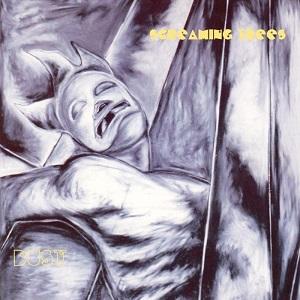 Following the success of other artists performing MTV’s ‘Unplugged’ series, Alice in Chains accepted the invitation from MTV to play, this would be the first Alice in Chains show in two and a half years and unlike the Nirvana show, it would feature many of the Alice in Chains hits such as; ‘Would?’ ‘No Excuses’, ‘Angry Chair’ and ‘Rooster’. The performance of Alice in Chains would see ‘Unplugged’ become one of Alice in Chains’ best-selling albums, reaching platinum status in the USA and allowed the world to see the raw, almost haunting harmonies between Layne Staley and Jerry Cantrell which can be heard clearly during ‘Brother’, ‘Heaven Beside You’ and ‘Rooster’. Alice in Chains used the ‘Unplugged’ concert to show that they were still working as a band and previewed the new song ‘The Killer is Me’. Accepting the offer to play ‘Unplugged’ rejuvenated Alice in Chains and the band set out on a 4 date tour supporting Kiss, unfortunately, following this short tour, Staley was found unconscious following a heroin overdose causing Alice in Chains to go once more on hiatus. For Alice in Chains, this break would last much longer than anticipated. Staley retreated within his home in Seattle following the death of his ex-partner and effectively became a recluse using drugs as a coping mechanism. It was no surprise that Staley was using, he had been struggling with drug addiction for over 10 years and this close death coupled with a now reclusive nature intensified Staley’s use. In 2002, after radio silence for 2 weeks, Staley was found dead on the 19th April in his apartment following an overdose of heroin and cocaine at the age of 34, the autopsy confirmed that Staley had died on the 5th April, in an eerie odd twist of fate, the same day as Kurt Cobain. With the death of Layne Staley, grunge had lost another one of their icons to an early death, but sadly, the reaper would not stop stalking the genre with the death of Staley.
Following the success of other artists performing MTV’s ‘Unplugged’ series, Alice in Chains accepted the invitation from MTV to play, this would be the first Alice in Chains show in two and a half years and unlike the Nirvana show, it would feature many of the Alice in Chains hits such as; ‘Would?’ ‘No Excuses’, ‘Angry Chair’ and ‘Rooster’. The performance of Alice in Chains would see ‘Unplugged’ become one of Alice in Chains’ best-selling albums, reaching platinum status in the USA and allowed the world to see the raw, almost haunting harmonies between Layne Staley and Jerry Cantrell which can be heard clearly during ‘Brother’, ‘Heaven Beside You’ and ‘Rooster’. Alice in Chains used the ‘Unplugged’ concert to show that they were still working as a band and previewed the new song ‘The Killer is Me’. Accepting the offer to play ‘Unplugged’ rejuvenated Alice in Chains and the band set out on a 4 date tour supporting Kiss, unfortunately, following this short tour, Staley was found unconscious following a heroin overdose causing Alice in Chains to go once more on hiatus. For Alice in Chains, this break would last much longer than anticipated. Staley retreated within his home in Seattle following the death of his ex-partner and effectively became a recluse using drugs as a coping mechanism. It was no surprise that Staley was using, he had been struggling with drug addiction for over 10 years and this close death coupled with a now reclusive nature intensified Staley’s use. In 2002, after radio silence for 2 weeks, Staley was found dead on the 19th April in his apartment following an overdose of heroin and cocaine at the age of 34, the autopsy confirmed that Staley had died on the 5th April, in an eerie odd twist of fate, the same day as Kurt Cobain. With the death of Layne Staley, grunge had lost another one of their icons to an early death, but sadly, the reaper would not stop stalking the genre with the death of Staley.
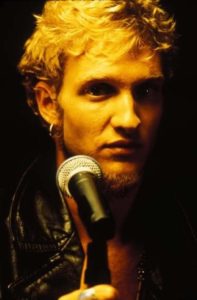 The latter half of 1996 would see grunge finally burn itself out and fade into obscurity. The bands that had made the movement famous were now defunct, in a tailspin or lost, buried under the tsunami from the peak of Britpop and the continuing rise of post-grunge, nu-metal and pop/punk. UK audiences quickly began to forget about grunge, being more concerned about who was better; Oasis or Blur whilst Radiohead were shifting albums both sides of the Atlantic by the pallet load with 1995’s ‘The Bends’ and 1997’s ‘OK Computer’. The Prodigy capitalised on the rave culture they had pioneered by conjoining guitars with drum and bass peaking with the mammoth selling 1997 album; ‘The Fat of the Land’.
The latter half of 1996 would see grunge finally burn itself out and fade into obscurity. The bands that had made the movement famous were now defunct, in a tailspin or lost, buried under the tsunami from the peak of Britpop and the continuing rise of post-grunge, nu-metal and pop/punk. UK audiences quickly began to forget about grunge, being more concerned about who was better; Oasis or Blur whilst Radiohead were shifting albums both sides of the Atlantic by the pallet load with 1995’s ‘The Bends’ and 1997’s ‘OK Computer’. The Prodigy capitalised on the rave culture they had pioneered by conjoining guitars with drum and bass peaking with the mammoth selling 1997 album; ‘The Fat of the Land’.
Stateside, the combination of rap and heavy metal that culminated in the nu-metal movement was irresistible to the angst ridden teenagers who quickly forgot about grunge and latched onto this considerably angrier movement with Korn releasing their debut album in 1994. The nu-metal movement would bludgeon its way through the world as flannel shirts and ripped jeans were swapped for wide baggy jeans, flame imprinted black shirts and/or an oversized hoody whilst greasy long hair was exchanged for short and spiky or moulded into dreadlocks until nu-metal hit its peak in and around 2000. By 2000, Korn had plateaued with their 1998 smash album; ‘Follow the Leader’, with bands following suit by alarming parents worldwide such as Slipknot with their self-titled debut album in 1999, Fred Durst and Limp Bizkit would piss off the world with ‘Significant Other’ in 1999 and the double entendre of ‘Chocolate Starfish and the Hot Dog Flavored Water’ in 2000, whilst Linkin Park providing a safe haven for introverted teens and kids alike with their monumental hit ‘Hybrid Theory’ in 2000. However, bubbling away behind the aggressive nu-metal movement was the happy-go-lucky, party all night long in a never ending summer of pop/punk. These bands provided the soundtrack to every teenage comedy about sex and masturbation for the next 10 years and bands such as The Offspring, Blink 182, Bowling For Soup and Sum 41 provided a silly alternative to the grinding hate and resentment of nu-metal.
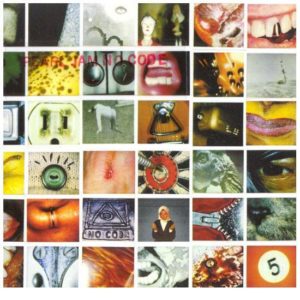 Not all the grunge bands fell apart or disbanded. Pearl Jam continued to stay one step ahead of the spotlight and continued the trend of making music on their terms which began with ‘Vitalogy’ in 1994. 1996 saw Pearl Jam release ‘No Code’, a much more direct album than its predecessor, although most of the songs evolved from last minute jams, the band had done away with the pointless songs that upset the flow of ‘Vitalogy’ and concentrated more on the punk rock garage sound. This garage sound mixed with more world elements would define the future Pearl Jam records and 1998’s ‘Yield’, 2000’s ‘Binaural’ and 2002’s ‘Riot Act’ would push original fans to the end of their tether and by now, it was clear that Pearl Jam would never make another ‘Ten’, Pearl Jam made music for them and this insular approach would push the band to breaking point once point in the years following ‘Vitalogy’. Forever tied to Pearl Jam, either consciously or unconscious, Stone Temple Pilots would also step away from the grunge sound that made them famous. In 1996, Stone Temple Pilots released their 3rd album; ‘Tiny Music… Songs from the Vatican Gift Shop’, and began to experiment with a more alternative rock sound with a few psychedelic influences to a rousing success with a top 5 album and 3 #1 singles with; ‘Big Bang Baby’, ‘Lady Picture Show’ and ‘Trippin’ on a Hole in a Paper Heart’. But for Stone Temple Pilots, their success would be plagued with internal problems and vocalist Scott Weilands well, more than publicised drug use. 1999 would see Stone Temple Pilots release ‘No. 4’ an album of increased aggression in and amongst the nu-metal movement. However, ‘No. 4’ would be followed by the commercial flop ‘Shangri-La Dee Da’ in 2001 and by 2002, Stone Temple Pilots would call it a day.
Not all the grunge bands fell apart or disbanded. Pearl Jam continued to stay one step ahead of the spotlight and continued the trend of making music on their terms which began with ‘Vitalogy’ in 1994. 1996 saw Pearl Jam release ‘No Code’, a much more direct album than its predecessor, although most of the songs evolved from last minute jams, the band had done away with the pointless songs that upset the flow of ‘Vitalogy’ and concentrated more on the punk rock garage sound. This garage sound mixed with more world elements would define the future Pearl Jam records and 1998’s ‘Yield’, 2000’s ‘Binaural’ and 2002’s ‘Riot Act’ would push original fans to the end of their tether and by now, it was clear that Pearl Jam would never make another ‘Ten’, Pearl Jam made music for them and this insular approach would push the band to breaking point once point in the years following ‘Vitalogy’. Forever tied to Pearl Jam, either consciously or unconscious, Stone Temple Pilots would also step away from the grunge sound that made them famous. In 1996, Stone Temple Pilots released their 3rd album; ‘Tiny Music… Songs from the Vatican Gift Shop’, and began to experiment with a more alternative rock sound with a few psychedelic influences to a rousing success with a top 5 album and 3 #1 singles with; ‘Big Bang Baby’, ‘Lady Picture Show’ and ‘Trippin’ on a Hole in a Paper Heart’. But for Stone Temple Pilots, their success would be plagued with internal problems and vocalist Scott Weilands well, more than publicised drug use. 1999 would see Stone Temple Pilots release ‘No. 4’ an album of increased aggression in and amongst the nu-metal movement. However, ‘No. 4’ would be followed by the commercial flop ‘Shangri-La Dee Da’ in 2001 and by 2002, Stone Temple Pilots would call it a day.
Following the release of their debut album; ‘Frogstomp’ in 1995, Silverchair began work on their sophomore album; ‘Freak Show’ released in 1997. ‘Freak Show’ saw Silverchair expand on the sound set down on ‘Frogstomp’ and contained arguably the bands most well-known songs with ‘Freak’ and ‘Abuse Me’, but following ‘Freak Show’, Silverchair would begin to experiment with different sounds in a post-grunge world, their 1999 release; ‘Neon Ballroom’ saw Silverchair add electronic elements to their work with vocalist and guitarist Daniel Johns going as far to quote that ‘Neon Ballroom’ is the first true Silverchair album. A bold statement from Johns which gives a real perspective into just how much Silverchair had grown up from the 15 year olds who recorded; ‘Frogstomp’.
The adoption of a much more post-grunge sound would hit its pinnacle in the years 1998-2002 as post-grunge took hold and even began to challenge nu-metal as the dominant sound. In these 4 years, post-grunge bands would score huge hits by combining the melody of grunge with their own watered down, highly polished sound, all the while taking advantage of the downtuned guitars and occasional nu-metal production to achieve massive sales. The searching Vedder-esque voice of Scott Stapp pushed Creed into the forefront of this movement, following the success of their 1997 album; ‘My Own Prison’, Creed released their post-grunge masterpiece in 1999 with ‘Human Clay’ containing the mega single ‘With Arms Wide Open’, that would help define the boundaries of post-grunge in the 21st century. Meanwhile in Canada, Nickelback had been lurking in the wings since 1996 building up a reasonable following with; ‘The Curb’ and ‘The State’, however, it was their 2001 album; ‘Silver Side Up’ which blew the band into the stratosphere with their huge radio hit; ‘How You Remind Me’ refining the layout for the post-grunge blueprint. Surrounded by Creed and Nickelback, bands such as Puddle of Mudd scored hits with ‘Blurry’ in 2001, alongside Staind’s 2001; ‘It’s Been Awhile’ whilst Matchbox Twenty had runaway success with their debut album in 1996 with ‘Yourself of Someone Like You’.
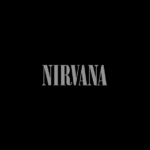 Following a lengthy court case between Courtney Love, the widow of Kurt Cobain and the remaining members of Nirvana; Dave Grohl and Krist Novoselic over the rights of the unreleased final Nirvana song; ‘You Know You’re Right’ from Nirvana’s last attempt at recording in the January of 1994. For many bootleggers, the song was no surprise, it had been floating around since 1993 under guise of ‘Autopilot’ and according to the band, at the time of Cobain’s death the song had no official title. With a settlement reached between both parties, the newly named ‘You Know You’re Right’ was released in the October of 2002 on the self-titled greatest hits album complete with an accompanying music video featuring a montage of Nirvana playing live, but with a particular focus on close ups of Cobain. It had been 8 years since Cobain’s tragic suicide and with a music industry fixated elsewhere, ‘You Know You’re Right’ suddenly turned a new generation on to the guy with the mop of unkempt blond hair and watery blue eyes. Since the release of ‘Nirvana’, Grohl, Novoselic, Love and Frances Cobain have worked to keep the Nirvana legacy and the memory of Kurt Cobain alive with Nirvana once more becoming one of the most revered bands of all time.
Following a lengthy court case between Courtney Love, the widow of Kurt Cobain and the remaining members of Nirvana; Dave Grohl and Krist Novoselic over the rights of the unreleased final Nirvana song; ‘You Know You’re Right’ from Nirvana’s last attempt at recording in the January of 1994. For many bootleggers, the song was no surprise, it had been floating around since 1993 under guise of ‘Autopilot’ and according to the band, at the time of Cobain’s death the song had no official title. With a settlement reached between both parties, the newly named ‘You Know You’re Right’ was released in the October of 2002 on the self-titled greatest hits album complete with an accompanying music video featuring a montage of Nirvana playing live, but with a particular focus on close ups of Cobain. It had been 8 years since Cobain’s tragic suicide and with a music industry fixated elsewhere, ‘You Know You’re Right’ suddenly turned a new generation on to the guy with the mop of unkempt blond hair and watery blue eyes. Since the release of ‘Nirvana’, Grohl, Novoselic, Love and Frances Cobain have worked to keep the Nirvana legacy and the memory of Kurt Cobain alive with Nirvana once more becoming one of the most revered bands of all time.
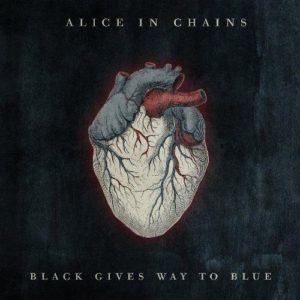 Alice in Chains had been in an ‘off/on’ hiatus since 1995/96 coinciding with Layne Staley’s deadly heroin addiction and following Staley’s death in 2002, Alice in Chains found themselves once more in the dark. During their break, guitarist Jerry Cantrell would release his second solo album; ‘Degradation Trip’ and was released two months after the death of Staley. Never officially breaking up, Alice in Chains got back together again in 2005 and 2006 to play benefit shows and featured a rotating roster of vocalist playing guest slots, one of which was Willian DuVall of the band Comes with the Fall who would by 2008 find himself as the new vocalist of Alice in Chains with their first album with DuVall; ‘Black Gives Way to Blue’ released 14 years after its predecessor. ‘Black Gives Way to Blue’ was well received by a world that seemed more than eager to hear more from Alice in Chains. However, the band would never forget the man who helped find the band success alongside battling his own person demons and live concerts from Alice in Chains are often adorned with montages of Layne Staley as well as Mike Starr, the bassist who played on ‘Facelift’, ‘Sap’ and ‘Dirt’ who would also pass away from a drug overdose on March 8th, 2011 after years of struggling with addiction and the loss of Staley as a friend. Starr was 44.
Alice in Chains had been in an ‘off/on’ hiatus since 1995/96 coinciding with Layne Staley’s deadly heroin addiction and following Staley’s death in 2002, Alice in Chains found themselves once more in the dark. During their break, guitarist Jerry Cantrell would release his second solo album; ‘Degradation Trip’ and was released two months after the death of Staley. Never officially breaking up, Alice in Chains got back together again in 2005 and 2006 to play benefit shows and featured a rotating roster of vocalist playing guest slots, one of which was Willian DuVall of the band Comes with the Fall who would by 2008 find himself as the new vocalist of Alice in Chains with their first album with DuVall; ‘Black Gives Way to Blue’ released 14 years after its predecessor. ‘Black Gives Way to Blue’ was well received by a world that seemed more than eager to hear more from Alice in Chains. However, the band would never forget the man who helped find the band success alongside battling his own person demons and live concerts from Alice in Chains are often adorned with montages of Layne Staley as well as Mike Starr, the bassist who played on ‘Facelift’, ‘Sap’ and ‘Dirt’ who would also pass away from a drug overdose on March 8th, 2011 after years of struggling with addiction and the loss of Staley as a friend. Starr was 44.
It was obvious that Pearl Jam could not stay sullen forever and 2006 was the year that Pearl Jam would stop avoiding the spotlight and stepped firmly into it with their self-titled 8th studio album, commonly referred to as ‘Avocado’ or the ‘Avocade album’ due to the odd album cover featuring an avocado cut in half against a stark blue background. ‘Pearl Jam’ featured a huge a change in sound from the albums of the late 90’s and early 2000’s. ‘Pearl Jam’ had a much more aggressive alternative rock sound that also incorporated elements of classic punk and hard rock that made the album a rousing success and was well received, both by fans and critics alike with Pearl Jam once more stating their political agendas, protesting very vocally against the War on Terror and the George W. Bush administration. 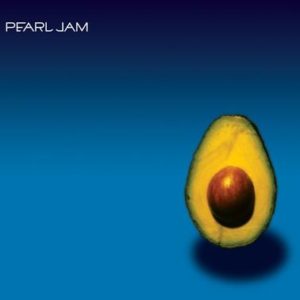 The internal conflicts and power struggles within Pearl Jam were now water under the bridge and the band admitted that they now worked as an absolute democracy. These elements continued into their 2009 album ‘Backspacer’ which just like their previous album was extremely well received and Pearl Jam achieved their first #1 album since ‘No Code’ in 1996. Pearl Jam’s perseverance had paid off, their years of fuck you’s to record labels and the media that would have crushed other bands had only served to increase their integrity during their darkest days and now on the other side of this, Pearl Jam made music for what they saw as integral to their career, the fans and themselves. Because of this, no matter where Pearl Jam go in the world, they will find legions of fans adoring their every move with each concert tailored personally to them, Pearl Jam have found themselves as one of the biggest grossing acts on the planet.
The internal conflicts and power struggles within Pearl Jam were now water under the bridge and the band admitted that they now worked as an absolute democracy. These elements continued into their 2009 album ‘Backspacer’ which just like their previous album was extremely well received and Pearl Jam achieved their first #1 album since ‘No Code’ in 1996. Pearl Jam’s perseverance had paid off, their years of fuck you’s to record labels and the media that would have crushed other bands had only served to increase their integrity during their darkest days and now on the other side of this, Pearl Jam made music for what they saw as integral to their career, the fans and themselves. Because of this, no matter where Pearl Jam go in the world, they will find legions of fans adoring their every move with each concert tailored personally to them, Pearl Jam have found themselves as one of the biggest grossing acts on the planet.
Those who had been members of other grunge bands that had disbanded approached the new century with a renewed vigour. Chris Cornell made his solo debut with ‘Euphoria Morning’ in 1999 in a move that showed off his song writing skills by expanding away from Soundgarden template and created an album of psychedelic folk rock that when stripped back, really showed the soul and passion behind Cornell’s voice. ‘Euphoria Morning’ was praised as an initial solo outing, but before too long, Cornell accepted an offer to join former Rage Against the Machine members in their new project. That project would grow into Audioslave. The calibre of these musicians instantly forced the spotlight onto Audioslave and they released their self-titled debut album in the latter end of 2002 to more than favourable reviews. Audioslave would continue to sell a rather large amount of records in their relatively small time of existence, 2005’s ‘Out of Exile’ focused less on the riffs of the first album and more on the overall song structure. However, by 2006, personal conflicts between Cornell and the other members were starting to show and following the release of the funk driven ‘Revelations’ in the same year, Audioslave decided to call it a day in early 2007. Cornell would go on to have a huge success in 2007 with his second solo album ‘Carry On’ which also featured the song ‘You Know My Name’, the song from the 2006 James Bond movie; ‘Casino Royale’. This planted Cornell on the map and introduced the man to an audience that had ignored the man with a four octave vocal range. The resulting album was 2009’s ‘Scream’, produced by R&B guru, Timbaland, it incorporated many hip-hop elements to Cornell’s music including samples and drum loops. ‘Scream’ is considered a huge commercial flop and on the 1st January 2010, many grunge prayers had been answered with the announcement that Soundgarden would be reforming after a 12 year break.
As Audioslave were beginning to fire on all cylinders, Stone Temple Pilots were collapsing and in 2002, they called it a day all together. Scott Weiland would find the opportunity to front the project put together by former members of Guns N’ Roses; Slash, Duff McKegan and Matt Sorum.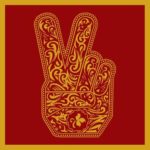 This would become Velvet Revolver and the band released their debut album; ‘Contraband’ in 2004. It was a rocky road from the start, Weiland was arrested for possession of drugs in 2003 and was sentenced to time in jail. ‘Contraband’ was more than well received as a Guns N’ Roses meets Stone Temple Pilots collaboration and the band followed this up with their 2007 album ‘Libertad’. Following the release of ‘Libertad’, Weiland quickly began to struggle with addiction and was once more arrested for a DUI, but was bailed. However, Weiland worsened and time in rehab did not change things and 2008 saw the cancellation of an Australian tour as well as a tour of the UK with visibly frayed tempers, it wasn’t long before Weiland announced his departure from Velvet Revolver with the intent of re-joining Stone Temple Pilots. The road reunion was one paved with trepidation and this gave Weiland chance to finish his second solo album; ‘”Happy” in Galoshes’ in 2008. By 2009, Stone Temple Pilots began to record what would become their self-titled and final album released in 2010. ‘Stone Temple Pilots’ would be well received and sell exceptionally well, hitting #2 on the US Billboard charts and #1 on both the US rock and hard rock album charts, for the first time in their history, it would seem that Stone Temple Pilots problems were well behind them.
This would become Velvet Revolver and the band released their debut album; ‘Contraband’ in 2004. It was a rocky road from the start, Weiland was arrested for possession of drugs in 2003 and was sentenced to time in jail. ‘Contraband’ was more than well received as a Guns N’ Roses meets Stone Temple Pilots collaboration and the band followed this up with their 2007 album ‘Libertad’. Following the release of ‘Libertad’, Weiland quickly began to struggle with addiction and was once more arrested for a DUI, but was bailed. However, Weiland worsened and time in rehab did not change things and 2008 saw the cancellation of an Australian tour as well as a tour of the UK with visibly frayed tempers, it wasn’t long before Weiland announced his departure from Velvet Revolver with the intent of re-joining Stone Temple Pilots. The road reunion was one paved with trepidation and this gave Weiland chance to finish his second solo album; ‘”Happy” in Galoshes’ in 2008. By 2009, Stone Temple Pilots began to record what would become their self-titled and final album released in 2010. ‘Stone Temple Pilots’ would be well received and sell exceptionally well, hitting #2 on the US Billboard charts and #1 on both the US rock and hard rock album charts, for the first time in their history, it would seem that Stone Temple Pilots problems were well behind them.
 Unfortunately, even after 30 years of stalking the Seattle movement, the grim reaper and his black dogs would never truly go away. Just when things were starting to look up for Stone Temple Pilots, the band would find themselves once more at loggerheads with their troubled but charismatic frontman; Scott Weiland. By 2013, Stone Temple Pilots had grown tired of Weiland’s trail of destruction and officially fired him from the band. Weiland was replaced by Linkin Park vocalist; Chester Bennington who would also leave the band in 2015 to focus more on his own band and as of the time of this publication, Stone Temple Pilots are still continuing to search for a replacement, however, for Weiland, life would take a much darker turn as addiction and depression would continue to plague him. In 2015, Weiland’s new band; Scott Weiland and The Wildabouts would release their debut album; ‘Blaster’ and was wrought with disaster from the start as one day before the album’s release, their guitarist; Jerry Brown was found dead of a drug overdose on the 30th March 2015 at the age of 34. Regardless, the tour for ‘Blaster’ continued and for Weiland, it would prove to be his last, on the 3rd of December 2015, Weiland was discovered unconscious on his tour bus and later confirmed dead at the scene from an overdose of a mixture of drugs and alcohol. Scott Weiland was 48.
Unfortunately, even after 30 years of stalking the Seattle movement, the grim reaper and his black dogs would never truly go away. Just when things were starting to look up for Stone Temple Pilots, the band would find themselves once more at loggerheads with their troubled but charismatic frontman; Scott Weiland. By 2013, Stone Temple Pilots had grown tired of Weiland’s trail of destruction and officially fired him from the band. Weiland was replaced by Linkin Park vocalist; Chester Bennington who would also leave the band in 2015 to focus more on his own band and as of the time of this publication, Stone Temple Pilots are still continuing to search for a replacement, however, for Weiland, life would take a much darker turn as addiction and depression would continue to plague him. In 2015, Weiland’s new band; Scott Weiland and The Wildabouts would release their debut album; ‘Blaster’ and was wrought with disaster from the start as one day before the album’s release, their guitarist; Jerry Brown was found dead of a drug overdose on the 30th March 2015 at the age of 34. Regardless, the tour for ‘Blaster’ continued and for Weiland, it would prove to be his last, on the 3rd of December 2015, Weiland was discovered unconscious on his tour bus and later confirmed dead at the scene from an overdose of a mixture of drugs and alcohol. Scott Weiland was 48.
This year will always be remembered not just in the grunge calendar, but in the rock and metal world too as the year in which one of the best voices in the past 25 years would be gone forever. Chris Cornell had been on tour with Soundgarden in the USA, yet that night in Detroit, something was amiss, Cornell seemed erratic, disjointed and generally not himself, a fact that was also picked up by the audience. 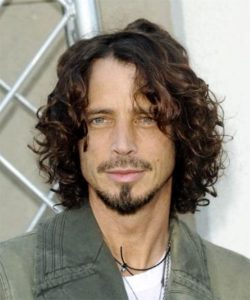 Cornell had previously had a history with drugs and immediately, the internet jumped to conclusions that Cornell was using again, the flames of the vicious rumour mill were fanned heavily when on the 18th May, Chris Cornell was found dead in his Detroit hotel room, asphyxiated by an exercise band. The toxicology report confirmed that Cornell had not taken any illicit drugs and that following the last Soundgarden performance, Cornell had returned to his hotel room and sadly taken his own life. Chris Cornell’s untimely death was shocking and unexpected and the music community mourned their loss. Chris Cornell was 52 years old.
Cornell had previously had a history with drugs and immediately, the internet jumped to conclusions that Cornell was using again, the flames of the vicious rumour mill were fanned heavily when on the 18th May, Chris Cornell was found dead in his Detroit hotel room, asphyxiated by an exercise band. The toxicology report confirmed that Cornell had not taken any illicit drugs and that following the last Soundgarden performance, Cornell had returned to his hotel room and sadly taken his own life. Chris Cornell’s untimely death was shocking and unexpected and the music community mourned their loss. Chris Cornell was 52 years old.
The bands of the Seattle Sound had come a long way from the plucky little garage bands playing their take on punk and 70’s rock on thrift store instruments. Gone were the angry, petulant young men who grabbed the attention of the world in the late 80’s and early 90’s with their fuck you attitude and flannel shirts, replaced by older, wiser and mature musicians. These initially reluctant heroes finally accepted their place in the rich history of rock and metal and have since become regarded as elder statesmen. Soundgarden were welcomed back into the fold in 2012 with ‘King Animal’, the band’s first studio album in 16 years and although ‘King Animal’ would not hit #1, it would become Soundgarden’s third best-selling album behind ‘Superunknown’ and ‘Down on the Upside’. Both Alice in Chains and Pearl Jam released their latest studio albums in 2013, ‘The Devil Put Dinosaurs Here’ and ‘Lightning Bolt’ both debuted at #1 and received more than positive reviews backed by successful tours which solidified the bands positions in the upper echelons of the rock and metal pantheon with the likes of Pearl Jam; Soundgarden, Jerry Cantrell, Dave Grohl and Krist Novoselic ascending alongside; Jimmy Page, Neil Young, Pete Townshend and Roger Daltrey.
The world has changed so much in 30 years, not just in music, but in every way possible, from locally swapping demo cassettes of bands to being interconnected worldwide to places and countries that would never seem possible has made the world much smaller. However, like it or not grunge became part of the rock and metal family and history, it was a movement that captivated the hearts not just of a generation, but an entire decade. The true Seattle sound may have disappeared underground circa 1990/91, but 25 years on, that distorted punk and angst ridden rumblings still has relevance now more than ever and it still comes from the north. However, this time, that sound is from the north of the United Kingdom and just like Washington of the late 70’s and early 80’s, it is poor, cheap instruments and thrift store clothes which circumvent an eerie parallel. Young grunge bands are challenging the swathe of local indie bands and metalcore bands, these bands from the punky quick-fire angst of Busik Mase and Happy Animal, the darker more disturbing side with Degeneration Fuzz and Seel to the gloom of Void, Invane and Weapon Dogs, as well as more international bands such as Old Trash from Brazil, Germany’s Pandora’s Bliss and Paradox from Ireland, it is safe to say that the Seattle sound has a better longevity than originally thought and with this, the future for the Seattle sound is in more than safe and capable hands.
Adam McCann / MHF Magazine

